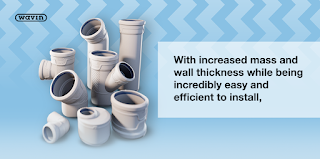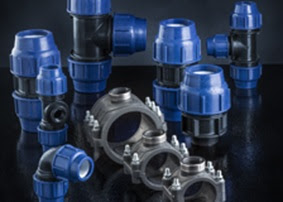Types of Plastic Pipe Connectors Based on Connection Type
1. Push fit fittings: Among the most innovative range of plastic plumbing pipe connectors are the push fit fittings. As the name indicates, these types of fittings are easy to install and require minimal force or effort while allowing for more secure connections. They can be used with PVC, PEX and other plastic pipes.
2. Threaded fittings: Another category of plastic fittings from every leading pipe manufacturing company is the threaded fittings. These feature threads at the ends and are compatible with pipes with similar ends. The ends are male or female depending on where the threading is. In female plastic pipes and connectors, the thread is on the inside and fits outside the male connectors while in male connectors, the threading is inside and these are secured inside the female connectors.
3. Slip fittings: One of the reasons plastic pipes are widely used is the ease of connecting them through what are known as slip fittings. These fittings easily slip onto the pipes to make connections and they can be further secured by the use of solvent cement approved by the manufacturer which does not require any special technique for using.
4. Clamp fittings: Another category of fittings which are used in plastic water pipes is that of clamp fittings. Once the fitting has been inserted, a clamp is fixed and tightened to secure the joint to make a leakproof connection.
5. Compression fittings: While compression fittings may also been seen as a sub-category of threaded fittings, they use the compression technique to squeeze the pipes and fittings together to make a connection.
For the best plastic pipe fittings for different applications, choose from the comprehensive range offered by Wavin, the leading global manufacturer of sustainable pipes and fittings for water supply and management. Wavin’s range of plastic pipe fittings include push fit and solvent fittings as well as electrofusion and butt welding fittings which are easy to install and allow for leakproof efficiency.



Comments
Post a Comment